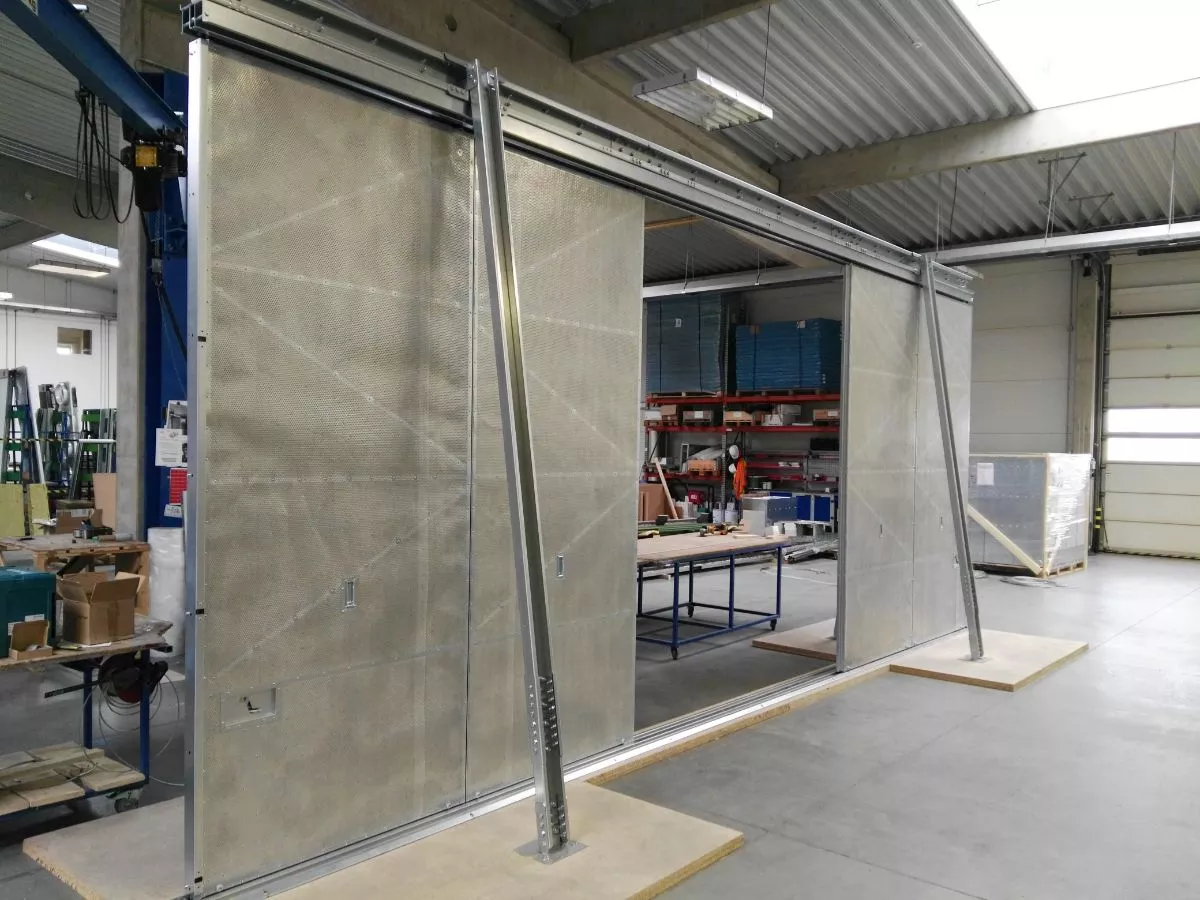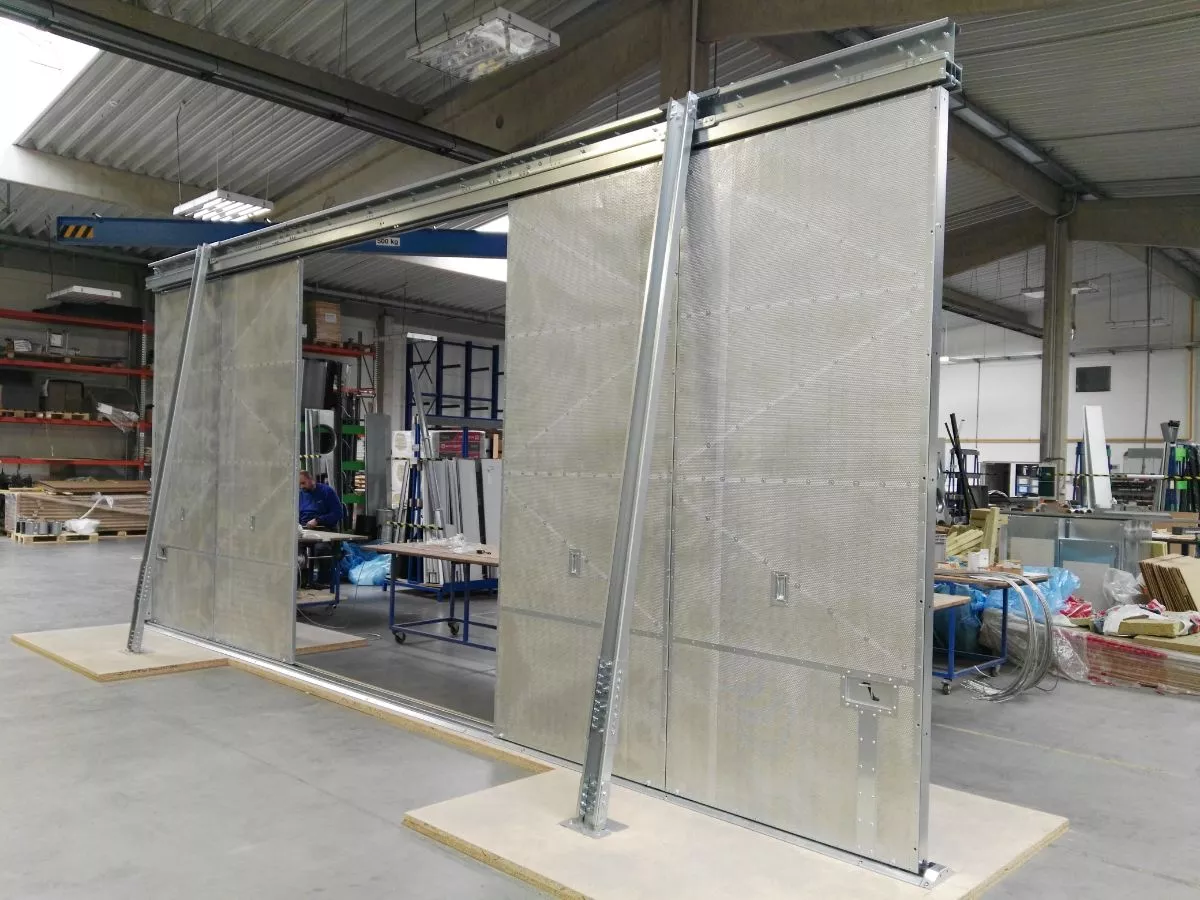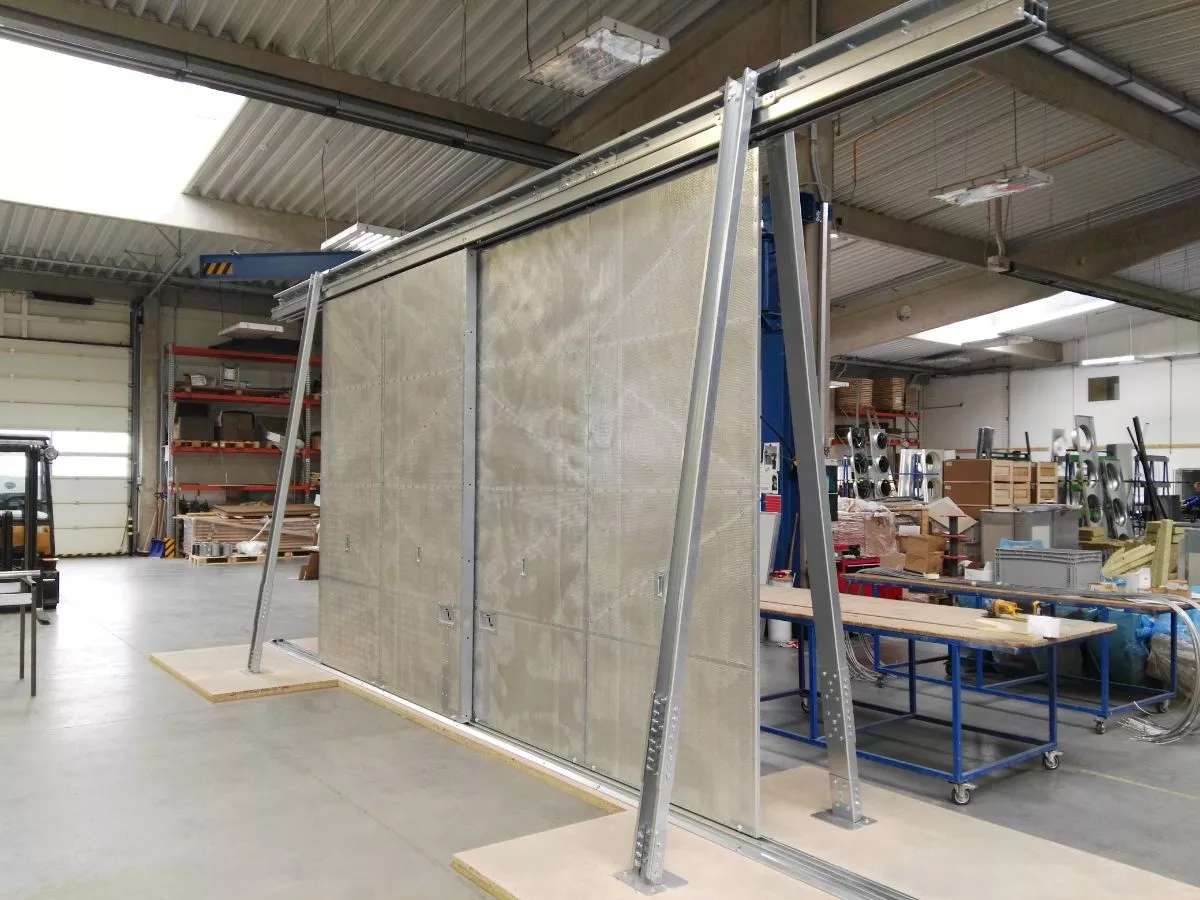Continuously wide-spreading technologies and human health protection in particular bring the need of reduction of the noise limits on workplaces, in technological and production processes. Excessively noisy technologies (production lines, technological appliances, air-conditioning, emergency electricity sources, compressor stations, and machines) can be provided with the SILENT WALL sliding noise reduction wall to create a separated space and reduce noise level to appropriate levels while keeping good accessibility to the object being noise-reduced.


The sliding noise reduction wall comprises separate modules manufactured in various designs up to 8,750 mm wide and up to 3,000mm high, refer to table. The modules may be erected one after one in various shapes and lengths without interconnecting the ones. Each separate module must be anchored to the ground using M12 chemical anchors. The required minimum thickness of the floor concrete is 120 mm, concrete class C15/20. The SILENT WALL sliding noise reduction walls are intended for use in interiors.
The sliding noise reduction panels are our development of SOUND LIGHT 50 series panels having thickness 50 mm and soundproofness Rw = 34.2 dB and slidingly fit in the bearing structure. The panels are interconnected using clips with shape keys. The sliding movement is possible using lower castors, the upper guide castors keep the stable position of the panels, the upper guide consists of steel guiding bar.
The steel supporting structure is made from steel zinc-coated bent metal sheets designed according to static calculation. The structure is delivered in disassembled state and the component parts are fixed by screw connection on site. All connection and anchoring material is included in the supply, including detail assembly instructions.

STAVOKLIMA s.r.o.
BUDĚJOVICKÁ 450, 370 01 HOMOLE